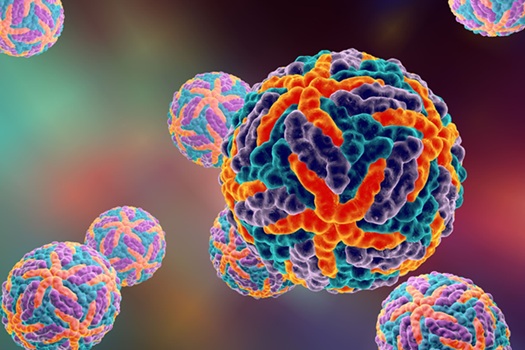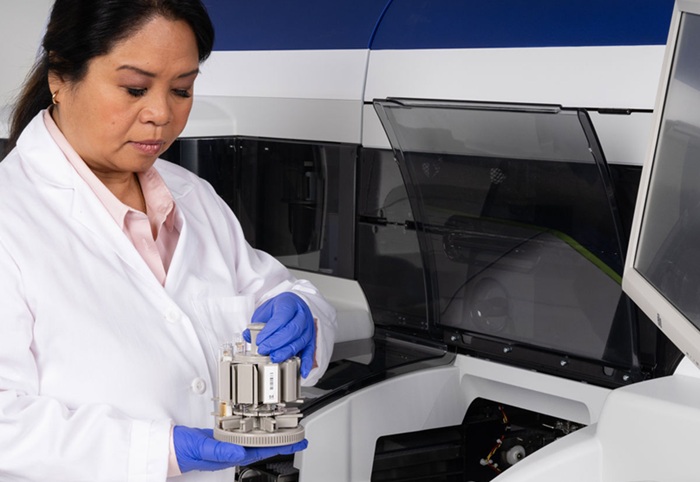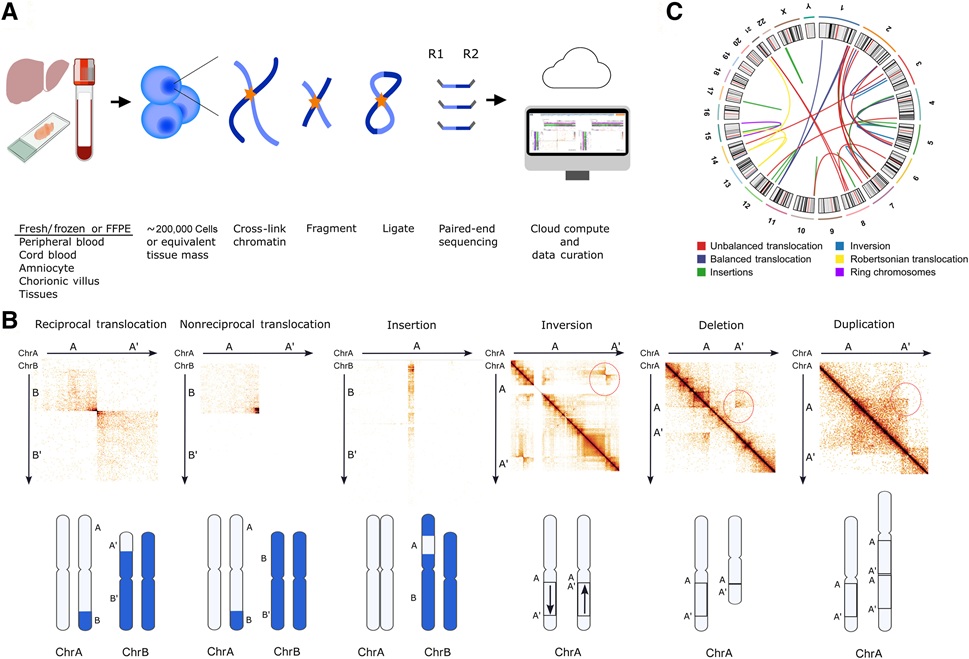Anti-Cancer Treatment Targets Activated Platelets in Tumor Microenvironment
|
By LabMedica International staff writers Posted on 19 Feb 2019 |
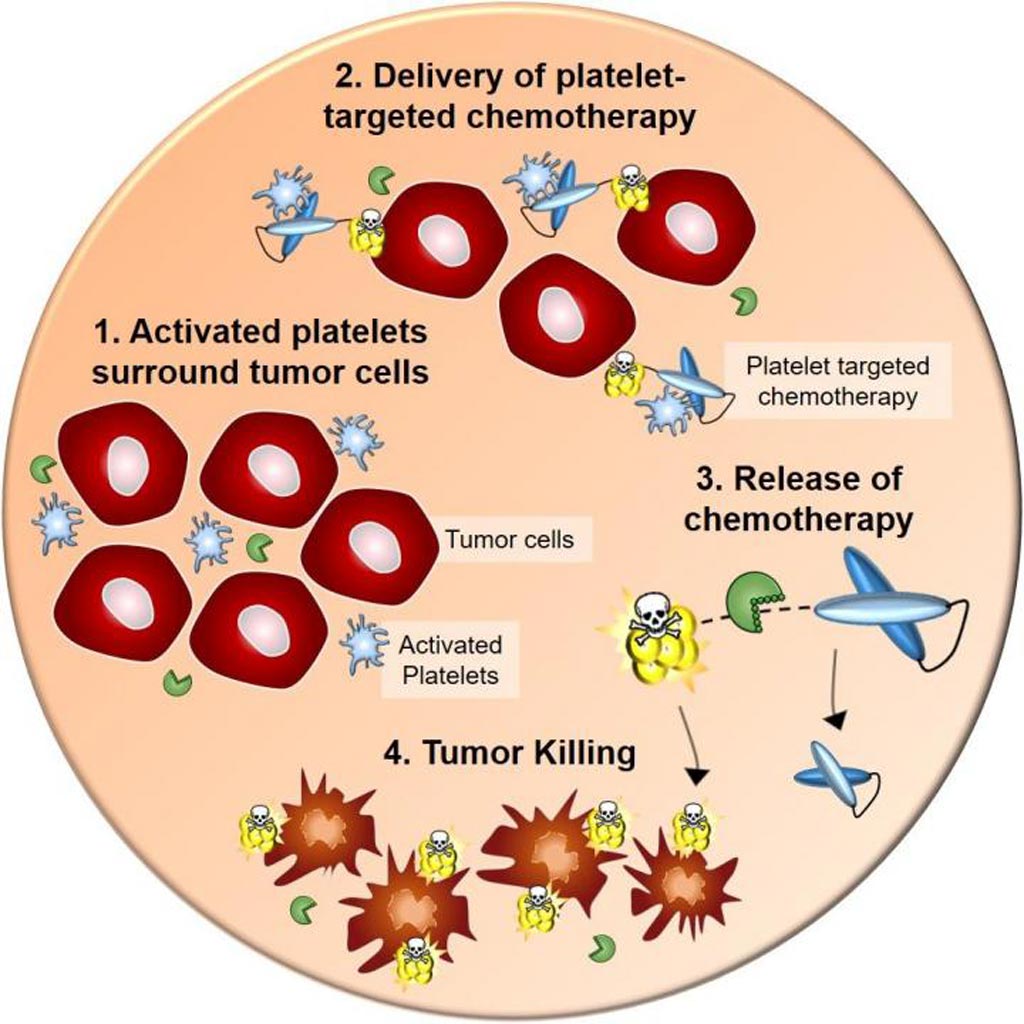
Image: The diagram illustrates the path of action of a new imaging and platelet targeting chemotherapy agent for the early detection and treatment of cancers (Photo courtesy of the Baker Heart and Diabetes Institute).
A novel chemotherapeutic agent transport system is based on the binding of an antibody-drug conjugate specifically directed to a surface protein on activated platelets in the tumor microenvironment.
Based on the premise that platelets in the blood are being increasingly recognized as mediators of tumor growth and metastasis, investigators at the Baker Heart and Diabetes Institute (Melbourne, Australia) hypothesized that activated platelets in the tumor microenvironment could provide a targeting epitope for tumor-directed chemotherapy.
Toward this end, the investigators developed an antibody-drug conjugate (ADC), comprised of a single-chain antibody (scFv) against the platelet integrin GPIIb/IIIa (scFvGPIIb/IIIa) protein that was linked to the potent chemotherapeutic microtubule inhibitor, monomethyl auristatin E (MMAE). The targeting scFv selectively bound to an epitope that wass hidden on the low-affinity GPIIb/IIIa of circulating platelets but became exposed on the high affinity GPIIb/IIIa, which was expressed on activated platelets.
The scFv single-chain antibody was linked chemically to the highly potent microtubule inhibitor, monomethyl auristatin E. Monomethyl auristatin E (MMAE) is an antimitotic agent which inhibits cell division by blocking the polymerization of tubulin. Because of its toxicity, it cannot be used as a drug itself; instead, it is linked to an antibody, which directs it to the cancer cells. The chemical linker used to attach the scFv to the antibody (in this study valine-citrulline) is stable in extracellular fluid, but is cleaved by the enzyme cathepsin B once the conjugate has entered a tumor cell, thus activating the antimitotic mechanism.
To demonstrate the functionality of this novel anti-cancer ADC, with its unique activated platelet targeting, the investigators first confirmed the efficacy of scFvGPIIb/IIIa-MMAE for tumor killing in human cell lines of triple negative breast cancer, colorectal cancer, fibrosarcoma, and prostate cancer. Next, they used a triple negative breast cancer metastasis model for proof of concept in vivo studies.
Results published in the February 2019 issue of the journal Theranostics revealed that treatment of mice with scFvGPIIb/IIIa-MMAE resulted in significant regression of primary tumors and prevented metastasis without systemic side effects. Furthermore, the investigators showed that scFvGPIIb/IIIa-MMAE could be conjugated with the fluorescent dye Cyanine7 for in vivo imaging and potential diagnostic use.
"This activated platelet targeted chemotherapy approach also provides the means to deliver high concentrations of chemotherapy specifically to tumor cells whilst minimizing side effects and preventing tumor growth," said senior author Dr. Karlheinz Peter, deputy director, basic and translational science at the Baker Heart and Diabetes Institute. "This highly promising and unexpected discovery with immense importance for cancer diagnosis and therapy emerged from years of research on the function of platelets in heart disease. It is a good example of the importance of funding in basic research which often produces unexpected but highly relevant discoveries that ultimately will provide benefit for patients."
Related Links:
Baker Heart and Diabetes Institute
Based on the premise that platelets in the blood are being increasingly recognized as mediators of tumor growth and metastasis, investigators at the Baker Heart and Diabetes Institute (Melbourne, Australia) hypothesized that activated platelets in the tumor microenvironment could provide a targeting epitope for tumor-directed chemotherapy.
Toward this end, the investigators developed an antibody-drug conjugate (ADC), comprised of a single-chain antibody (scFv) against the platelet integrin GPIIb/IIIa (scFvGPIIb/IIIa) protein that was linked to the potent chemotherapeutic microtubule inhibitor, monomethyl auristatin E (MMAE). The targeting scFv selectively bound to an epitope that wass hidden on the low-affinity GPIIb/IIIa of circulating platelets but became exposed on the high affinity GPIIb/IIIa, which was expressed on activated platelets.
The scFv single-chain antibody was linked chemically to the highly potent microtubule inhibitor, monomethyl auristatin E. Monomethyl auristatin E (MMAE) is an antimitotic agent which inhibits cell division by blocking the polymerization of tubulin. Because of its toxicity, it cannot be used as a drug itself; instead, it is linked to an antibody, which directs it to the cancer cells. The chemical linker used to attach the scFv to the antibody (in this study valine-citrulline) is stable in extracellular fluid, but is cleaved by the enzyme cathepsin B once the conjugate has entered a tumor cell, thus activating the antimitotic mechanism.
To demonstrate the functionality of this novel anti-cancer ADC, with its unique activated platelet targeting, the investigators first confirmed the efficacy of scFvGPIIb/IIIa-MMAE for tumor killing in human cell lines of triple negative breast cancer, colorectal cancer, fibrosarcoma, and prostate cancer. Next, they used a triple negative breast cancer metastasis model for proof of concept in vivo studies.
Results published in the February 2019 issue of the journal Theranostics revealed that treatment of mice with scFvGPIIb/IIIa-MMAE resulted in significant regression of primary tumors and prevented metastasis without systemic side effects. Furthermore, the investigators showed that scFvGPIIb/IIIa-MMAE could be conjugated with the fluorescent dye Cyanine7 for in vivo imaging and potential diagnostic use.
"This activated platelet targeted chemotherapy approach also provides the means to deliver high concentrations of chemotherapy specifically to tumor cells whilst minimizing side effects and preventing tumor growth," said senior author Dr. Karlheinz Peter, deputy director, basic and translational science at the Baker Heart and Diabetes Institute. "This highly promising and unexpected discovery with immense importance for cancer diagnosis and therapy emerged from years of research on the function of platelets in heart disease. It is a good example of the importance of funding in basic research which often produces unexpected but highly relevant discoveries that ultimately will provide benefit for patients."
Related Links:
Baker Heart and Diabetes Institute
Latest BioResearch News
- Genome Analysis Predicts Likelihood of Neurodisability in Oxygen-Deprived Newborns
- Gene Panel Predicts Disease Progession for Patients with B-cell Lymphoma
- New Method Simplifies Preparation of Tumor Genomic DNA Libraries
- New Tool Developed for Diagnosis of Chronic HBV Infection
- Panel of Genetic Loci Accurately Predicts Risk of Developing Gout
- Disrupted TGFB Signaling Linked to Increased Cancer-Related Bacteria
- Gene Fusion Protein Proposed as Prostate Cancer Biomarker
- NIV Test to Diagnose and Monitor Vascular Complications in Diabetes
- Semen Exosome MicroRNA Proves Biomarker for Prostate Cancer
- Genetic Loci Link Plasma Lipid Levels to CVD Risk
- Newly Identified Gene Network Aids in Early Diagnosis of Autism Spectrum Disorder
- Link Confirmed between Living in Poverty and Developing Diseases
- Genomic Study Identifies Kidney Disease Loci in Type I Diabetes Patients
- Liquid Biopsy More Effective for Analyzing Tumor Drug Resistance Mutations
- New Liquid Biopsy Assay Reveals Host-Pathogen Interactions
- Method Developed for Enriching Trophoblast Population in Samples
Channels
Clinical Chemistry
view channel
VOCs Show Promise for Early Multi-Cancer Detection
Early cancer detection is critical to improving survival rates, but most current screening methods focus on individual cancer types and often involve invasive procedures. This makes it difficult to identify... Read more
Portable Raman Spectroscopy Offers Cost-Effective Kidney Disease Diagnosis at POC
Kidney disease is typically diagnosed through blood or urine tests, often when patients present with symptoms such as blood in urine, shortness of breath, or weight loss. While these tests are common,... Read moreMolecular Diagnostics
view channel
New Biomarker Panel to Improve Heart Failure Diagnosis in Women
Heart failure affects millions worldwide, yet many women are still misdiagnosed or diagnosed too late. Although heart failure broadly means the heart cannot pump enough blood to the body’s cells, its two... Read more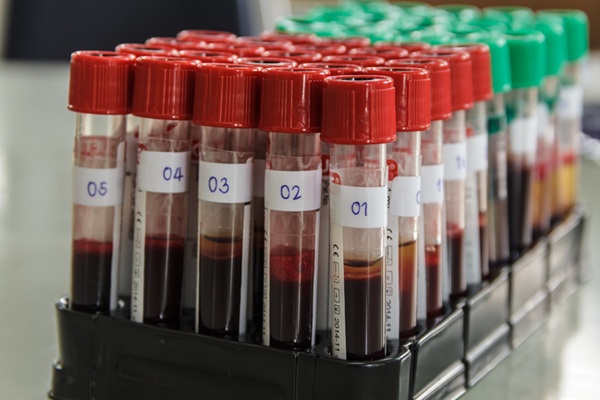
Dual Blood Biomarkers Improve ALS Diagnostic Accuracy
Diagnosing amyotrophic lateral sclerosis (ALS) remains difficult even with advanced imaging and genetic tools, especially when clinicians must distinguish it from other neurodegenerative conditions that... Read moreHematology
view channel
ADLM’s New Coagulation Testing Guidance to Improve Care for Patients on Blood Thinners
Direct oral anticoagulants (DOACs) are one of the most common types of blood thinners. Patients take them to prevent a host of complications that could arise from blood clotting, including stroke, deep... Read more
Viscoelastic Testing Could Improve Treatment of Maternal Hemorrhage
Postpartum hemorrhage, severe bleeding after childbirth, remains one of the leading causes of maternal mortality worldwide, yet many of these deaths are preventable. Standard care can be hindered by delays... Read more
Pioneering Model Measures Radiation Exposure in Blood for Precise Cancer Treatments
Scientists have long focused on protecting organs near tumors during radiotherapy, but blood — a vital, circulating tissue — has largely been excluded from dose calculations. Each blood cell passing through... Read moreImmunology
view channel
Chip Captures Cancer Cells from Blood to Help Select Right Breast Cancer Treatment
Ductal carcinoma in situ (DCIS) accounts for about a quarter of all breast cancer cases and generally carries a good prognosis. This non-invasive form of the disease may or may not become life-threatening.... Read more
Blood-Based Liquid Biopsy Model Analyzes Immunotherapy Effectiveness
Immunotherapy has revolutionized cancer care by harnessing the immune system to fight tumors, yet predicting who will benefit remains a major challenge. Many patients undergo costly and taxing treatment... Read moreMicrobiology
view channel
15-Minute Blood Test Diagnoses Life-Threatening Infections in Children
Distinguishing minor childhood illnesses from potentially life-threatening infections such as sepsis or meningitis remains a major challenge in emergency care. Traditional tests can take hours, leaving... Read more
High-Throughput Enteric Panels Detect Multiple GI Bacterial Infections from Single Stool Swab Sample
Gastrointestinal (GI) infections are among the most common causes of illness worldwide, leading to over 1.7 million deaths annually and placing a heavy burden on healthcare systems. Conventional diagnostic... Read morePathology
view channel
AI Tool Improves Accuracy of Skin Cancer Detection
Diagnosing melanoma accurately in people with darker skin remains a longstanding challenge. Many existing artificial intelligence (AI) tools detect skin cancer more reliably in lighter skin tones, often... Read more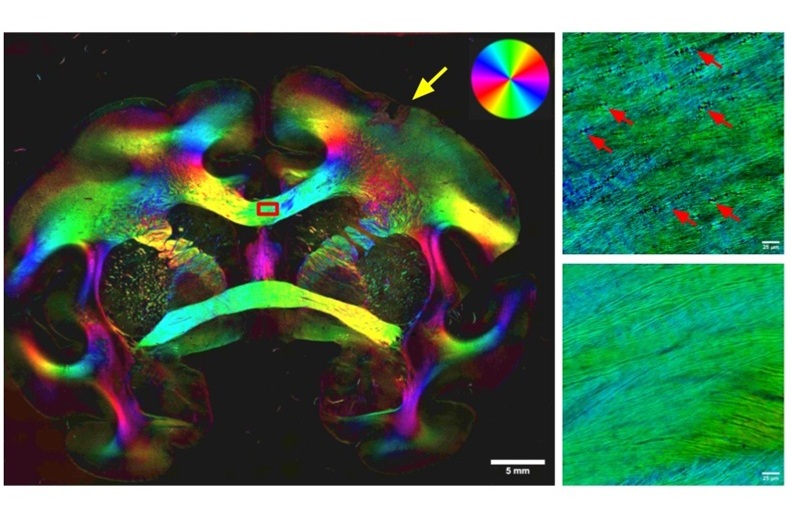
Highly Sensitive Imaging Technique Detects Myelin Damage
Damage to myelin—the insulating layer that helps brain cells function efficiently—is a hallmark of many neurodegenerative diseases, age-related decline, and traumatic injuries. However, studying this damage... Read moreTechnology
view channel
Portable Biosensor Diagnoses Psychiatric Disorders Using Saliva Samples
Early diagnosis of psychiatric disorders such as depression, schizophrenia, and bipolar disorder remains one of medicine’s most pressing challenges. Current diagnostic methods rely heavily on clinical... Read more
Cell-Sorting Device Uses Electromagnetic Levitation to Precisely Direct Cell Movement
Sorting different cell types—such as cancerous versus healthy or live versus dead cells—is a critical task in biology and medicine. However, conventional methods often require labeling, chemical exposure,... Read moreIndustry
view channel
Co-Diagnostics Forms New Business Unit to Develop AI-Powered Diagnostics
Co-Diagnostics, Inc. (Salt Lake City, UT, USA) has formed a new artificial intelligence (AI) business unit to integrate the company's existing and planned AI applications into its Co-Dx Primer Ai platform.... Read more







 Analyzer.jpg)





